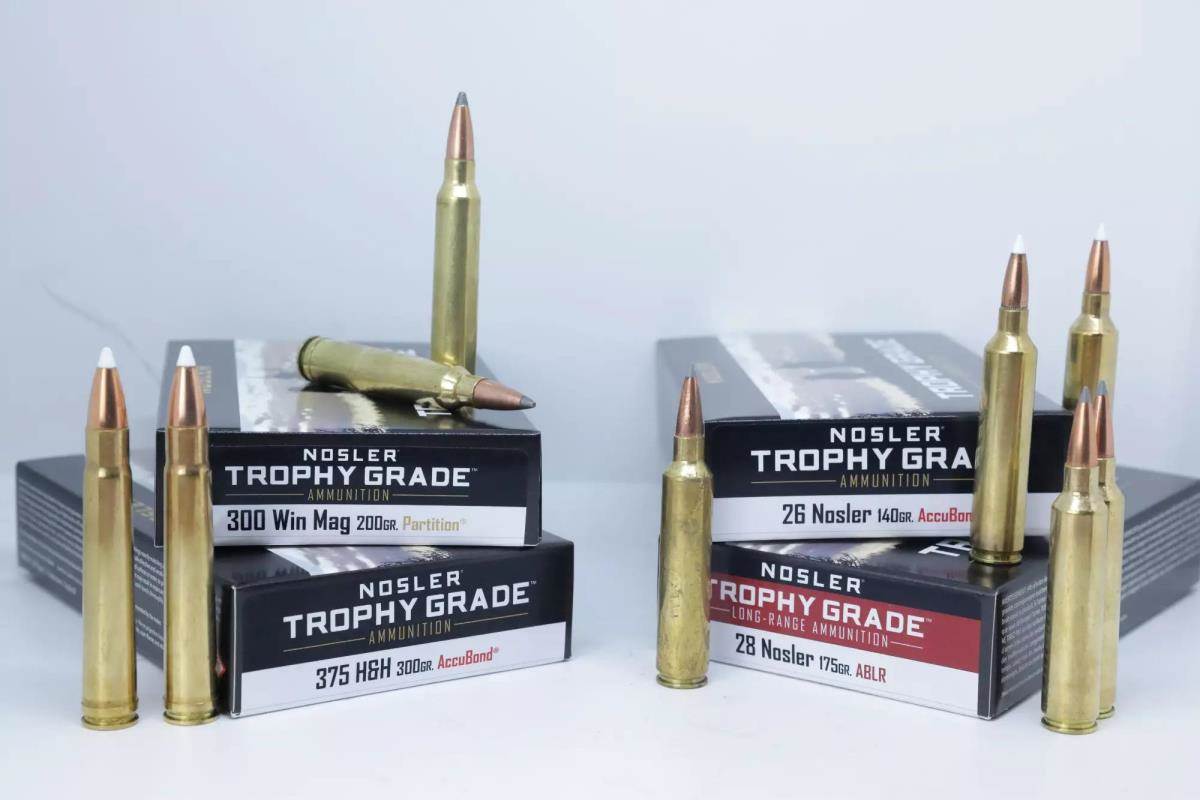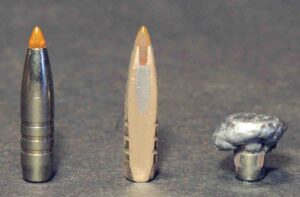Federal premium trophy bonded tip
When it comes to hunting or long-range shooting, selecting the right bullet weight is paramount. The federal premium trophy bonded tip bullets have gained popularity among hunters and shooters for their excellent performance and accuracy. However, with various bullet weights available, choosing the right one can be overwhelming. In this guide, we will delve into the factors you should consider to ensure you select the ideal Federal Trophy Bonded Tip bullet weight for your needs.
Exploring Federal premium trophy bonded tip Bullets
Before delving into the specifics of bullet weight selection, let’s first understand what Federal Trophy Bonded Tip bullets are and what sets them apart.
- Composition: Federal Trophy Bonded Tip bullets are constructed using a proprietary bonding process that ensures high weight retention and deep penetration.
- Tip Design: The polymer-tipped design of these bullets enhances accuracy and expansion upon impact.
- Applications: These bullets are commonly used for hunting various game species, including deer, elk, and bear.
Factors to Consider
Target Game Species
One of the primary considerations when choosing the right Federal Trophy Bonded Tip bullet weight is the type of game you will be hunting. Different game species have varying sizes and densities, which require different bullet weights for optimal performance.
- Deer: For deer hunting, a medium to heavy bullet weight, such as 150 to 180 grains, is often recommended to ensure sufficient penetration and expansion.
- Elk: Elk are larger and tougher animals, requiring heavier bullets in the range of 180 to 220 grains for adequate stopping power.
- Bear: When hunting bear, especially larger species like grizzly or brown bear, heavier bullets upwards of 200 grains are preferred to ensure deep penetration and reliable performance.
Desired Ballistic Performance
The ballistic performance of a bullet is influenced by factors such as velocity, trajectory, and energy transfer upon impact. Understanding your desired ballistic performance will help narrow down the appropriate bullet weight range.
- Velocity: Lighter bullets tend to have higher velocities, making them suitable for longer-range shooting and flatter trajectories.
- Trajectory: Heavier bullets typically have better ballistic coefficients, resulting in less wind drift and more retained energy at longer distances.
- Energy Transfer: For ethical hunting, it’s crucial to select a bullet weight that ensures adequate energy transfer to effectively take down game without causing unnecessary suffering.
Rifle Characteristics
Another factor to consider is the specific characteristics of your rifle, including barrel length, twist rate, and chamber specifications. Certain rifles may perform better with particular bullet weights, so it’s essential to test different options to find the optimal match.
- Twist Rate: The twist rate of your rifle’s barrel determines the stability of the bullet in flight. Heavier bullets may require a faster twist rate to stabilize properly.
- Chamber Specifications: Some rifles have chambers optimized for specific bullet lengths or weights. Be sure to check your rifle’s chamber specifications to ensure compatibility with your chosen bullet weight.
Personal Preference and Shooting Style
Ultimately, personal preference and shooting style play a significant role in selecting the right Federal Trophy Bonded Tip bullet weight. Factors such as recoil sensitivity, shooting distance, and intended shot placement should all be taken into account when making your decision.
- Recoil Sensitivity: Heavier bullets typically generate more recoil, which may affect shooter comfort and accuracy, especially during extended shooting sessions.
- Shooting Distance: Consider the typical shooting distances encountered in your hunting or shooting scenarios. Lighter bullets may be more suitable for longer-range shots, while heavier bullets excel at shorter distances.
- Shot Placement: Different bullet weights may produce varying terminal ballistics, affecting penetration and expansion characteristics. Choose a bullet weight that aligns with your desired shot placement and game anatomy.
Federal premium trophy bonded tip vs. Other Bullet Types: A Comparison
When it comes to choosing the right ammunition for your firearm, the options can be overwhelming. Each bullet type boasts its own unique features and advantages, making it challenging to determine which one is the best fit for your needs. In this article, we’ll delve into the realm of bullets, focusing particularly on the Federal Trophy Bonded Tip and comparing it against other bullet types. Whether you’re a seasoned marksman or a novice shooter, understanding the differences between these bullets can greatly enhance your shooting experience. So, let’s lock and load as we embark on the Federal Trophy Bonded Tip vs. Other Bullet Types: A Comparison journey!
Exploring the Federal Trophy Bonded Tip
The Federal Trophy Bonded Tip stands out as a premium choice among shooters for its exceptional performance and reliability. Let’s take a closer look at what sets this bullet apart from the rest:
- Bonded Core: The Federal Trophy Bonded Tip features a bonded core design, where the lead core is molecularly bonded to the copper jacket. This construction ensures maximum weight retention upon impact, delivering deep penetration and devastating terminal performance.
- Tipped Design: One of the defining characteristics of the Federal Trophy Bonded Tip is its polymer-tipped design. The polymer tip enhances the bullet’s aerodynamics, promoting a flatter trajectory and improved accuracy, especially at longer ranges.
- Consistent Expansion: When it comes to stopping power, consistent expansion is crucial. The Federal Trophy Bonded Tip excels in this aspect, reliably expanding upon impact to create wide wound cavities for swift and humane kills.
- Versatility: Whether you’re hunting big game or pursuing varmints, the Federal Trophy Bonded Tip proves to be a versatile option suitable for a wide range of hunting scenarios.
Comparing with Other Bullet Types
Now that we’ve examined the features of the Federal Trophy Bonded Tip, let’s stack it up against other popular bullet types to see how it fares:
Jacketed Hollow Point (JHP)
- Expansion: While Jacketed Hollow Points are renowned for their rapid expansion upon impact, they may not retain as much weight as the Federal Trophy Bonded Tip, potentially sacrificing penetration in some scenarios.
- Accuracy: Both bullet types offer excellent accuracy, but the Federal Trophy Bonded Tip’s polymer tip provides a slight edge in terms of maintaining trajectory consistency over longer distances.
- Application: JHP bullets are often favored for self-defense due to their reliable expansion and stopping power, whereas the Federal Trophy Bonded Tip shines in hunting situations where deep penetration and weight retention are paramount.
Full Metal Jacket (FMJ)
- Penetration: Full Metal Jacket bullets are prized for their deep penetration, making them ideal for target shooting and military applications. However, they lack the expansion and terminal performance of the Federal Trophy Bonded Tip, particularly in hunting scenarios.
- Cost: FMJ bullets are typically more affordable than premium options like the Federal Trophy Bonded Tip, making them a popular choice for shooters on a budget.
- Legal Considerations: In some jurisdictions, the use of FMJ bullets for hunting may be restricted due to their potential for over-penetration and increased risk of injuring unintended targets.
FAQs (Frequently Asked Questions) About Federal premium trophy bonded tip
- What bullet weight is best for deer hunting with Federal Trophy Bonded Tip bullets?
- For deer hunting, bullet weights ranging from 150 to 180 grains are generally recommended for optimal performance and terminal ballistics.
- Do lighter or heavier bullets perform better with Federal Trophy Bonded Tip bullets?
- The performance of lighter or heavier bullets depends on factors such as target game species, shooting distance, and personal preference. It’s essential to consider these factors when selecting the appropriate bullet weight.
- How does rifle twist rate affect bullet weight selection?
- Rifle twist rate determines the stability of the bullet in flight. Heavier bullets may require a faster twist rate to stabilize properly and achieve optimal accuracy.
- Can I use the same bullet weight for different types of game with Federal Trophy Bonded Tip bullets?
- While certain bullet weights may perform adequately for various game species, it’s recommended to tailor your bullet weight selection to the specific characteristics and size of the game you will be hunting for optimal performance.
- What role does personal preference play in choosing the right bullet weight?
- Personal preference, including factors such as recoil sensitivity, shooting style, and intended shot placement, should be taken into account when selecting the right bullet weight. Choose a weight that aligns with your shooting preferences and comfort level.
- Q: Is the Federal Trophy Bonded Tip suitable for long-range shooting? A: Yes, the Federal Trophy Bonded Tip’s polymer-tipped design enhances its ballistic coefficient, making it well-suited for long-range shooting applications.
- Q: How does the Federal Trophy Bonded Tip perform against barriers like thick clothing or bone? A: The Federal Trophy Bonded Tip’s bonded core construction allows it to punch through barriers with ease while maintaining its weight and expanding reliably upon impact.
- Q: Are there any environmental concerns associated with using the Federal Trophy Bonded Tip? A: Federal Trophy Bonded Tip bullets are lead-free, making them an environmentally friendly choice for conscientious shooters.
Conclusion
Choosing the right Federal Trophy Bonded Tip bullet weight is a crucial decision that can significantly impact your hunting or shooting experience. By considering factors such as target game species, desired ballistic performance, rifle characteristics, and personal preferences, you can make an informed choice that maximizes effectiveness and ethicality in the field.



